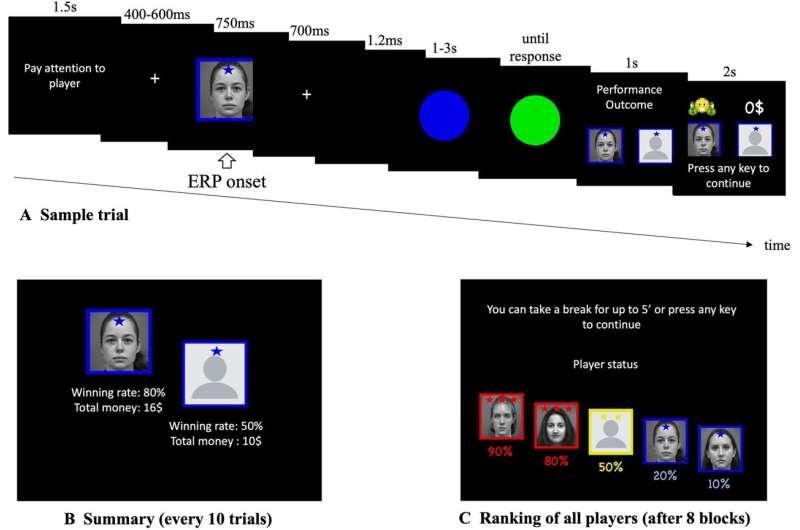This article has been reviewed according to Science X's editorial process and policies. Editors have highlighted the following attributes while ensuring the content's credibility:
fact-checked
peer-reviewed publication
trusted source
proofread
How our brains can rapidly identify people in power

Our brains can identify people in power at lightning speed, based on how we perceive dominant people, University of Queensland research has found.
Dr. Alan Pegna from UQ's School of Psychology said recognizing how people are ranked in social groups is a key feature that helps us navigate our complex social environment.
"We measured electrical activity in the brain while participants played a game alongside other individuals who were either a lot better or a lot worse than them, or so they thought," Dr. Penga said.
"The brain processed 'better' players within two-tenths of a second after seeing their faces.
"The findings demonstrate that our brains are geared towards processing hierarchy in our social groups. It also suggests that the part of the brain that is linked to processing fear plays a role when identifying dominant people.
"Humans live in social environments that function through the establishment of hierarchies, with individuals acting as leaders and others as followers.
"These findings explain why our brains are wired to rapidly identify those who are in a position of leadership. This could be applied to all interactions such as in the workspace, at school or in sports activities."
The research team asked participants to play a computer game requiring them to respond to a change in color of an object appearing on a screen and their average speed was shown to them after 10 trials.
"At the same time, the results of fake participants along with their photos were provided to the participants," Dr. Pegna said. "The set of photos were of young actors and their performances were made up, so some were consistently better than the participant while others were consistently worse.
"The electrical activity of the brain was measured when the photos of these dominant and non-dominant players appeared on the screen.
"The results showed that after playing for several minutes, the brain began to respond differently to the view of the dominant, but not the non-dominant individual."
The research is published in the journal Cognitive, Affective, & Behavioral Neuroscience.
More information: Alan J. Pegna et al, Hierarchical status is rapidly assessed from behaviourally dominant faces, Cognitive, Affective, & Behavioral Neuroscience (2023). DOI: 10.3758/s13415-023-01108-1


















